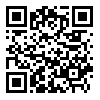Volume 8, Issue 3 (12-2019)
2019, 8(3): 29-40 |
Back to browse issues page
Download citation:
BibTeX | RIS | EndNote | Medlars | ProCite | Reference Manager | RefWorks
Send citation to:



BibTeX | RIS | EndNote | Medlars | ProCite | Reference Manager | RefWorks
Send citation to:
The Role of Factors Influencing the Optical Properties of Yttrium Aluminum Garnet Ceramic Body. Iranian Journal of Ceramic Science & Engineering 2019; 8 (3) :29-40
URL: http://ijcse.ir/article-1-718-en.html
URL: http://ijcse.ir/article-1-718-en.html
Abstract: (3645 Views)
Yttrium Aluminum Garnet (Y3Al5O12) is a transparent ceramic with a wide range of applications such as high mechanical strength windows, high power laser sources and radiation detectors. The most important challenge in making these ceramics is the problem of low light transmittance, especially in the visible area in the range of 400 to 700 nm, which is greatly affected and reduced by various factors. So far, many efforts have been made to reduce the structural and microstructural defects of components made using this material to bring the optical properties of the material closer to theoretical values. In the present study, YAG transparent ceramics with high optical properties were fabricated by solid state synthesis method using Y2O3 and Al2O3 nanopowders and then Sintered under vacuum furnace at 1730°C during 12 hours And the combination of TEOS (tetraethyl orthosilicate) was used as sintering aid. Then bodies were annealed in two steps at 1200°C for 4 hours and about 1300°C for 5 hours. SEM, PL, EDX, UV-Vis characterization tests were used for microstructural and optical examination of ceramic bodies. The results showed that the structural and atomic defects as well as the presence of some impurities such as Ce+3 caused the absorption and reduction of light transmittance in the visible wavelength ranges. Studies have shown that the most important factor in reducing optical properties is the defects in structure that cause light scattering.
| Rights and permissions | |
 |
This work is licensed under a Creative Commons Attribution-NonCommercial 4.0 International License. |


